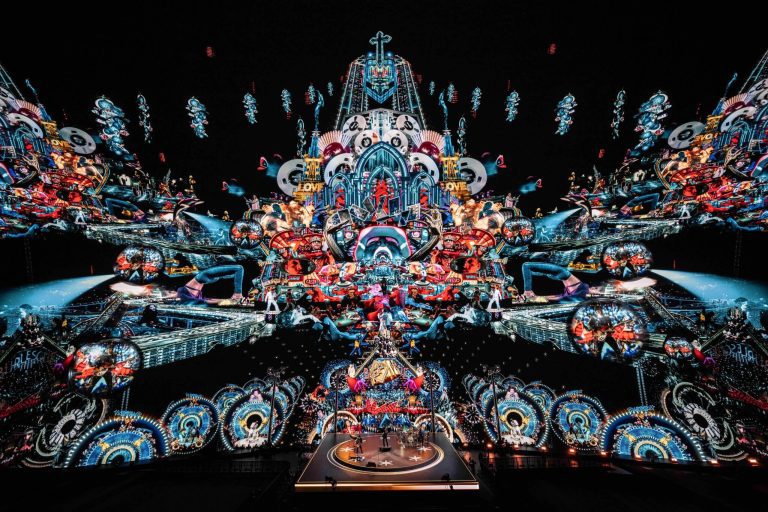Hube had a unique opportunity to talk with the creative minds behind one of the most anticipated shows of 2023. As we stepped into the world of U2, one of the most famous and successful rock bands of all time, we found ourselves at the intersection of art, music, technology, and innovation. Today we invite you to explore the creative vision of the team behind the U2:UV Achtung Baby Live At Sphere shows, a project celebrating the band’s legendary album and the birth of a unique performance venue:
— Adam Clayton, a founding member of U2, whose bass lines have been a crucial part of the band’s distinctive sound.
— Es Devlin, the acclaimed stage designer. Devlin has made large-scale touring stage sculptures in collaboration with Beyoncé, Adele, and The Weeknd. She worked for the Royal Opera House in London and designed the London Olympics closing (2012) along with the Rio Olympics opening (2016). Devlin’s work has received numerous awards, including an OBE (Officer of the Order of the British Empire) for her services to stage and set design.
— Marco Brambilla, a contemporary artist and film director. You can find his works in the collections of the Museum of Modern Art, New York; Solomon R. Guggenheim Museum, New York. Brambilla’s work often explores themes related to pop culture, media, and technology. His collaborations with U2 involved a remarkable video content production that enhanced the band’s live performances.
— Willie Williams, the lighting and stage design visionary. Williams’ work has earned him recognition and multiple awards in the live entertainment industry. He is known for his innovative use of lighting technology to create immersive and visually stunning concert experiences. He has collaborated with musical artists such as R.E.M., David Bowie, The Rolling Stones, and Robbie Williams.
Together, these creative minds are helping to shape the future of live entertainment and redefining the perception of artistic experiences.

